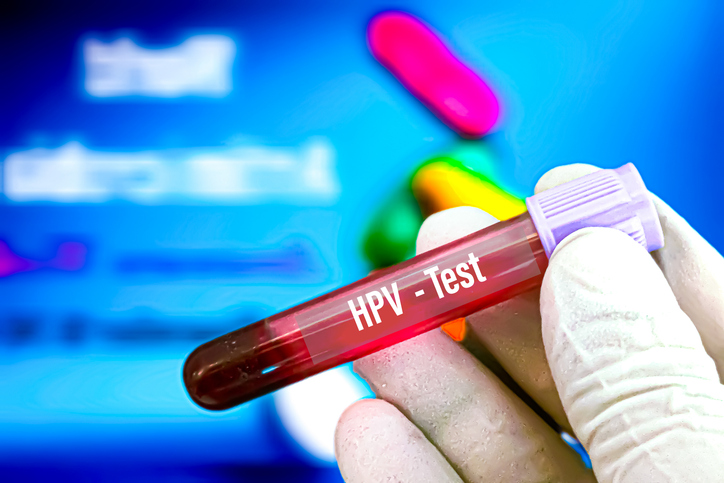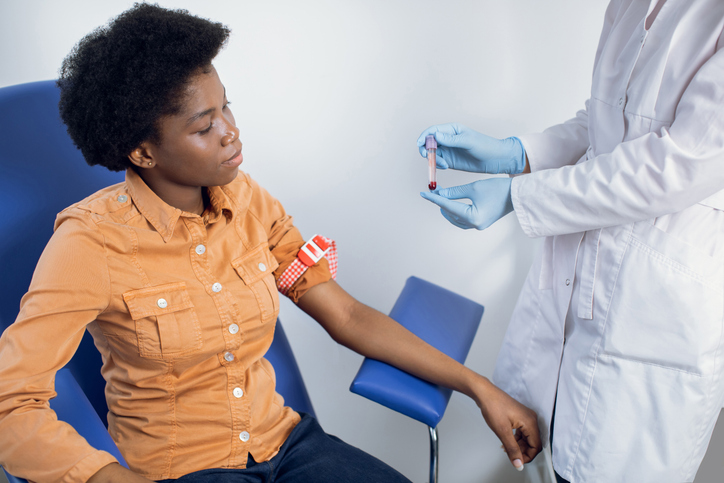STI And HIV Cases Are On The Rise In Certain States
Stay Vigilant! Which States Are You More At Risk To Catch An STD

Source: Md Ariful Islam / Getty
According to a report published on Dec.14, 2024, by the prescription service company Universal Drugstore, sexually transmitted infections (STIs) and HIV cases are increasing in certain states, which may put you at a higher risk of contracting either one depending on where you live.
Alaska, North Carolina and Mississippi have the highest rates of STI infections.
According to the study, Mississippi, Alaska, and North Carolina have the highest rates of STI infections in the country. With a score of 9.64/10, Mississippi has the highest STI score in the nation, with a troubling rate of over 700 chlamydia cases per 100,000 residents. Compounding the issue, Mississippi also has the lowest HPV vaccination rate in the country at just 38.5%, well below the national average of 62.6%.
Alaska comes in second with a score of 8.47/10. While Alaska doesn’t report the highest number of STI cases overall, its smaller population means it is significantly impacted by infections like gonorrhea, which stands at 251.1 per 100,000 residents. Chlamydia is the state’s most prevalent STI, with 700.9 cases per 100,000. However, there’s some positive news: cases of STIs in Alaska have dropped by over 18% in the last five years, indicating a slow, but steady, downward trend.
North Carolina ranked third for STI cases, with a score of 8.37/10. According to the study, North Carolina has over 65,867 chlamydia infections reported, equating to about 608 cases per 100,000 residents. This number has dropped by 6.2% since 2019, when it surpassed 70,000.
HIV cases are growing in Arkansas and Georgia.
The study also highlighted a concerning rise in HIV infections in Arkansas, which have increased by 66.7% since 2018. In 2022, the state reported 400 new HIV cases, or 15.5 per 100,000 residents, an alarming jump of more than two-thirds. In contrast, the U.S. as a whole has seen a 13.5% decrease in HIV cases over the same period. Currently, the incurable virus is most common in Georgia, where the rate stands at 23.1 cases per 100,000 residents, more than twice the national average.

Source: Md Ariful Islam / Getty
RELATED CONTENT: STDs And STIs Are Not One In The Same: Here’s The Major Difference
According to The Lancet, young people aged 15–24 accounted for 53% of all new STI cases in 2020. Among these, 62% of new chlamydia cases were found in adolescents, and the sharpest increases in syphilis and gonorrhea were seen in females within the age group. Rising rates of congenital syphilis reflect the growing number of infections among women of childbearing age. Alarmingly, only 51% of sexually active adolescents reported using a condom during intercourse in 2020.
Dr. Jamie Winn, the medical director of Universal Drugstore and a key author behind the study, believes that the notable rise in STI infections across the country could be due to lack of sex education among young people.
“While it is true that abstinence is the only 100% effective way to prevent teen pregnancy and STIs, teenagers are notoriously experimental, so it is careless to think that this form of sex education alone will make a positive difference,” Winn told the New York Post in an article published Jan.18.
“Having access to a comprehensive sex education curriculum gives students the information they need to be safe if they choose to explore, aiding both personal development and mental well-being.”

Source: undefined undefined / Getty
Here are the states with the least STI infections.
Several states have been less impacted by the sharp rise in STIs, with New Hampshire, Vermont, and Idaho recording the lowest STI scores, at 0.31/10, 0.46/10, and 1.28/10, respectively.
New Hampshire leads the nation with the lowest STI rates, reporting just 588 cases of gonorrhea and 139 cases of syphilis. While chlamydia rates are slightly higher at nearly 197 per 100,000, it remains the lowest in the U.S. The state also boasts one of the highest HPV vaccination rates, at 76.2%, just behind Rhode Island and Massachusetts.
Vermont follows closely with the fewest gonorrhea and syphilis cases in the country, just 34 and 3.2 per 100,000, respectively. Gonorrhea cases have dropped by nearly 24% since 2019, and syphilis cases have also decreased during this period.
Idaho ranks third, with the highest rates of syphilis and chlamydia in the region, reporting 13.1 and 294.9 cases per 100,000 residents. However, its gonorrhea rate is relatively low, at just under 40 per 100,000.
The study also found that 86% of U.S. states have seen a decline in chlamydia cases since 2019. However, a significant disparity in HPV vaccination rates exists, with Rhode Island leading the nation at 46.7% higher rates than Mississippi, which has the lowest. Vermont is the only state to have experienced a decrease in syphilis cases over the same period.
On a positive note, HIV cases have fallen by 13.5% since 2018, the largest decrease among all STIs in the U.S. But we’re not out of the clear yet. It’s crucial to remain vigilant and continue practicing safe sex measures during intercourse.
RELATED CONTENT: Get Tested! Reports Show Syphilis, Congenital Syphilis Cases On The Rise In The US, Blacks 2nd-Highest Demographic At Risk







